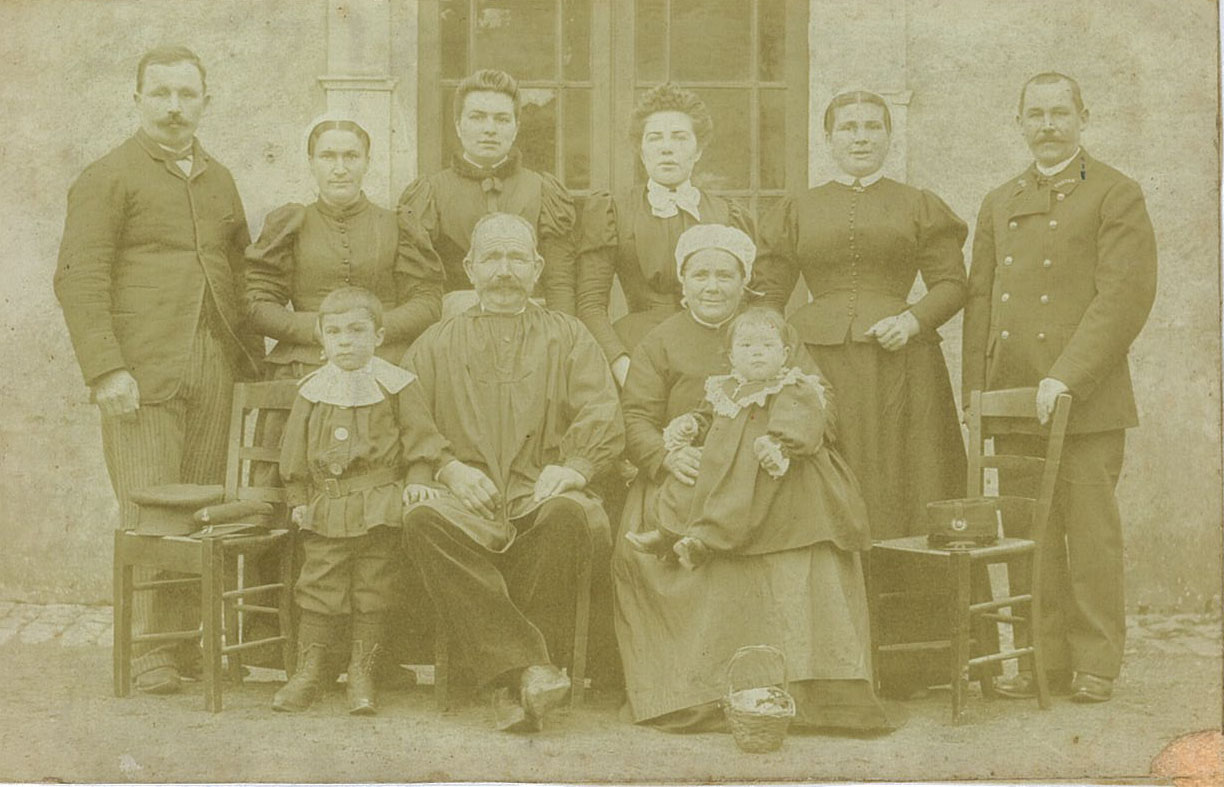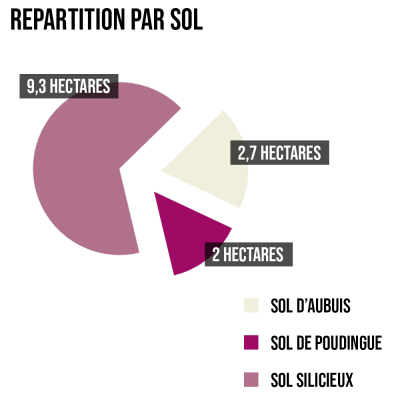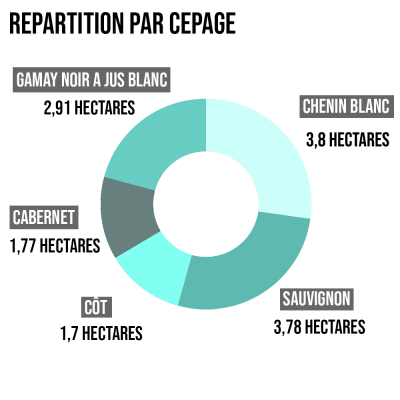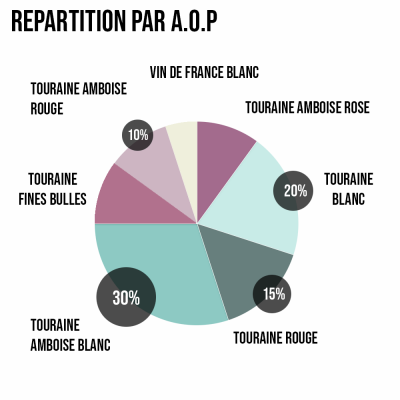The history of the Domaine
Acquisition of the first plots
It was during the Great War that my great grandparents Masson acquired our family home as well as the first plots of vines for Henri, their only son who was mobilised at that time. Among these, a first hillside overlooking the village, renowned for producing some of the best chenin wines of Mosnes: Les Perrières, which was to become his Migonne.
Already, they had understood that the pedological conditions of a soil are determining in the organoleptic quality of a wine well before the choice of the grape variety, the work and the climatic conditions. As soon as he was demobilised and during the forty years that followed, my grandfather never ceased to expand the estate with other beautiful and renowned plots (la coulée des Hottins, Les Monceux, Sauve la Vie, la Croix Bourge…).


A new generation at the Domaine
A new stage was reached in the early 1960s when Guy Durand, by marrying Denise (Henri’s youngest daughter), integrated a vast early 19th century building into the estate, which was to become our cellar.
He bought new plots of vines, including a very beautiful first hillside with perched soil, the Garmonière.
My parents then undertook to restructure the vineyard into noble grape varieties (Chenin, Sauvignon, Côt, Gamay and Cabernet), coupled with a policy of wise purchases: numerous plots in the Mallards, Monceux, Bousiers and Haie-Bâchelier… some 50 purchases!
From then on, most of the vines located to the east of the village on the first slopes and at the very beginning of the plateau belonged to us.
The history of the Domaine
Acquisition of the first plots
It was during the Great War that my great grandparents Masson acquired our family home as well as the first plots of vines for Henri, their only son who was mobilised at that time. Among these, a first hillside overlooking the village, renowned for producing some of the best chenin wines of Mosnes: Les Perrières, which was to become his Migonne.
Already, they had understood that the pedological conditions of a soil are determining in the organoleptic quality of a wine well before the choice of the grape variety, the work and the climatic conditions. As soon as he was demobilised and during the forty years that followed, my grandfather never ceased to expand the estate with other beautiful and renowned plots (la coulée des Hottins, Les Monceux, Sauve la Vie, la Croix Bourge…).

A new generation at the Domaine
A new stage was reached in the early 1960s when Guy Durand, by marrying Denise (Henri’s youngest daughter), integrated a vast early 19th century building into the estate, which was to become our cellar.
He bought new plots of vines, including a very beautiful first hillside with perched soil, the Garmonière.
My parents then undertook to restructure the vineyard into noble grape varieties (Chenin, Sauvignon, Côt, Gamay and Cabernet), coupled with a policy of wise purchases: numerous plots in the Mallards, Monceux, Bousiers and Haie-Bâchelier… some 50 purchases!
From then on, most of the vines located to the east of the village on the first slopes and at the very beginning of the plateau belonged to us.

Towards the current vineyard
Shortly after my return to the estate, in the mid-1990s, an opportunity arose for me to acquire a second plot of land, renowned for its chenin, located at Le Pin. Then a third, La Huaudière, a hill on the first slope, both on aubuis soil, west of the village.
Last but not least, we recently acquired the only parcel of land on the first slope to the east of the village that we were missing: les Chétevilles, 2 hectares on a perrucheous soil.
From now on, I am focusing all my attention on a small vineyard of 14 hectares, 9 of which are on slopes, with the sole aim of producing beautiful, airy grapes in measured quantities in order to obtain the optimum phenolic maturity for each vintage. The aim is to avoid any chemical or technical readjustments in the cellar.
Philippe Durand

Domain in figures

Our estate is also distinguished by the diversity of grape varieties. We produce several wines with a protected designation of origin (A.O.P), although the Touraine Amboise appellation constitutes the major part of our production.
Our estate is also distinguished by the diversity of grape varieties.
Since the 2019 vintage, the majority of our vintages are declared as Protected Geographical Indication Val de Loire (PGI) and as Vin de France for the others.

